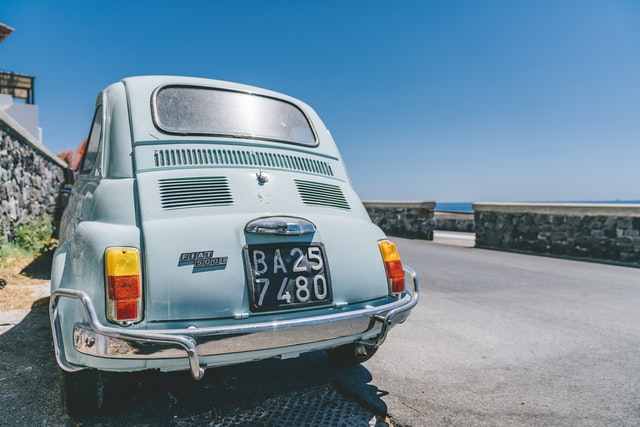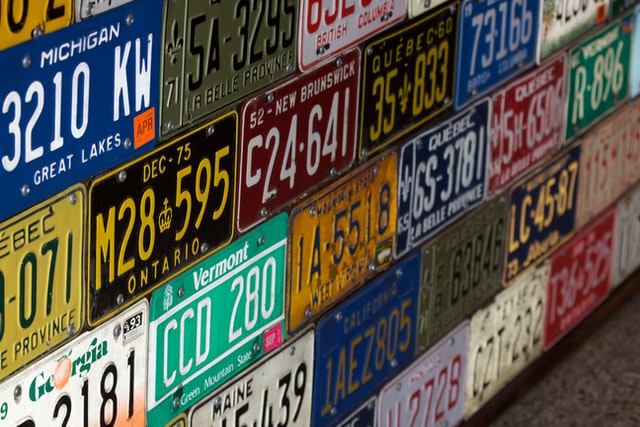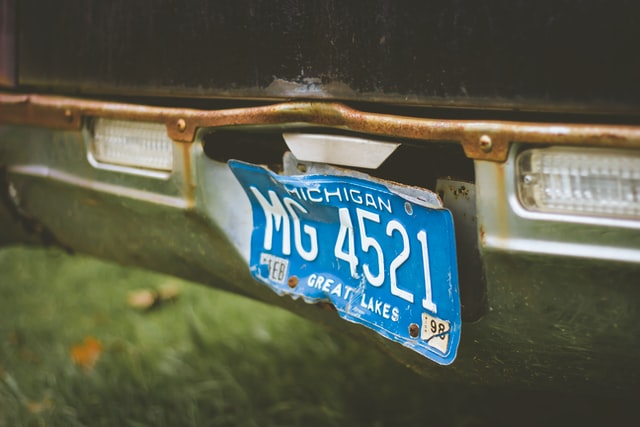If you own a classic car, you are probably one of the many who have heard of or even thought about getting antique license plates. Each state differs in the appearance of antique plates, but they are all quite recognizable and let other bikers know that you are riding in a piece of history.
Contents
If you have fallen into this dilemma, you may be wondering about this issue and may want to know the advantages and/or disadvantages of having antique plates.
So what are the advantages of antique plates? Having antique plates means that you usually only need to register your classic vehicle once after paying a one-time fee. You won't have to do any inspections or emissions testing, and you'll save money on car insurance. Each state is different regarding the details, but this generally applies to everyone.
Registering a classic car with antique license plates. I own several classic cars and have been able to get a good idea of the pros and cons of antique license plates. Make sure you know what you want to do with registering your classic car. It will save you a lot of time and effort in the future.
More and more often, we see vehicles with yellow license plates on our roads. Usually, the owners of old cars face the dilemma of changing their regular white plates for yellow ones. Then the questions arise: What will be the benefits? How much does it cost to maintain an antique vehicle? What are the limitations of being registered as a "historic vehicle"?
Registering a car as a "historic car" and receiving "yellow plates" has advantages and disadvantages. We will try to familiarize you with the topic, but first, we will remind you what criteria must be met by the car we want to register as a historic vehicle.
A vehicle that we want to register as a historic vehicle should be at least 30 years old and cannot have been manufactured for more than 15 years, and must have at least 75% of its original parts (including the principal components).
The situation is slightly different in the case of a vehicle less than 25 years old. If it is a unique specimen (exceptional construction solutions and unit production), it should be characterized by at least one of the following features:
- has unique construction solutions,
- It documents crucial stages in the development of automotive technology,
- was associated with important historical events,
- was used by people commonly regarded as exceptionally important,
- is connected with essential sports achievements,
- has an original design or has been restored,
- has been faithfully reproduced according to the technology of the period of its production.
Props for registering it as a historic vehicle:

- Insurance - we can only take out a third-party insurance policy for a few months rather than for a whole year (this is especially important in winter when our cars are generally winterized in garages). The minimum insurance period is one month.
- Vehicles younger than 40 years of age are exempt from the obligation of continuous OC, while older vehicles receive an exemption.
- Some insurance companies offer discounts on OC for antique vehicles. Additionally, if you are a member of a Polish motoring association or automobile club, the deals may reach 70%.
- An antique vehicle undergoes a one-time technical inspection. This is in contrast to an ordinary car, which undergoes such inspection every year. The only exception to this is if the vehicle is involved in a collision or accident, then a second inspection is necessary.
- In the event of an accident involving a historic vehicle, the insurance company's valuer will assess the vehicle's value based on its collector's value rather than catalog value.
- Historic emergency vehicles (police, fire) can travel on public roads with light and sound signals as long as they are original and turned off.
- Antique cars are exempt from the recycling fee. This applies to the vehicle registered in the country for the first time.
- When importing a collector or historic car from outside the European Union, you will not pay any customs or excise duty, and VAT will be only 8%.
- For many users of historic vehicles, yellow plates increase their prestige and may increase the car's value when sold.
Cons of having a vehicle registered as a historic vehicle:

- The cost of registering a vintage is higher than writing a regular car.
- The time required to register the car in the case is much longer.
- We should notify the provincial conservator about significant works and changes to the vehicle.
- Once registered, a historic vehicle will never have the possibility to return to the "white plates."
- An antique vehicle cannot be used for commercial purposes.
- Vehicles entered in the register of monuments that are more than 50 years old and their value is higher than PLN 32,000, require a permit from the Conservator of Monuments to permanently export the monument abroad. If you obtain such a permit, you will have to pay a fee equal to 25% of the car's value when sold abroad.
- It is getting more challenging to reach the original parts, and it is so vital because a historic vehicle must have at least 75% of the original features.
Cars that qualify for antique license plates

Actually, many people and institutions have their own definition of what is considered an antique. Each state has a different meaning, but they are all reasonably close in number.
If you are thinking about getting antique plates for your classic car, your car must be at least 25 to 30 years old. It's actually not that old when you think about it; technically, a Honda from the early 1980s would qualify for antique plates. But you probably won't see many runners around town with these plates.
Fortunately, you don't have to have original parts, paint, bodywork, etc., to qualify. That would probably disqualify many classic cars. This is not true. Antique plates are not required if you have an old car. It is just an option for people who want them.
Why is registration for antique plates available?

Why antique plates are available at all. Sure, the benefits of having antique plates are excellent because it's more convenient for us classic car owners, but what came up with the idea in the first place?
It's not clear when the United States started issuing antique plates, but we can assume that antique plates became popular around the same time that car shows became popular. In the early 1980s, more people attended car shows, and from then on, they became a popular event for many people to participate in during the summer.
Cars are an essential part of history, and respect and tribute to cars should be taken. Vintage plates were issued to people to help preserve a piece of history, and in the United States, they are as important as Independence Day.
When you decide to have antique license plates on your classic car, you are trying to protect your vehicle while being environmentally friendly.
There are limits to the number of miles you can drive your classic vehicle each year. Occasional use keeps your car in good condition, but it's cured and slowly ruins if you don't force it. Not to say that those who don't have antique plates do, but having antique plates are part of the effort.
Can I personalize antique plates?

Registering antique plates on your car can be a source of great pride as it almost confirms that you are driving a beautiful piece of history. There is nothing better than showing off your car at a car show or driving it around downtown for all to see.
Another critical question you may have is if you get a vintage license plate, can you personalize it? Can you ask what is written on them? Fortunately, in most states, you can personalize the plates.
You must first think about what you want to have on your plates or tags to do this. You can have a combination of any letters or numbers, but they usually can't exceed 6 - 7.5 characters (0.5 is a space or dash between characters), depending on your state. It's a good idea to come up with some ideas you like because chances are someone has already used some of the ideas you came up with.
Once you have some ideas of what you want to donate to your boards, you can go online to your state's DMV website or your local DMV office and request personalized boards. Remember, there are rules about what you can and cannot display on your plates.




